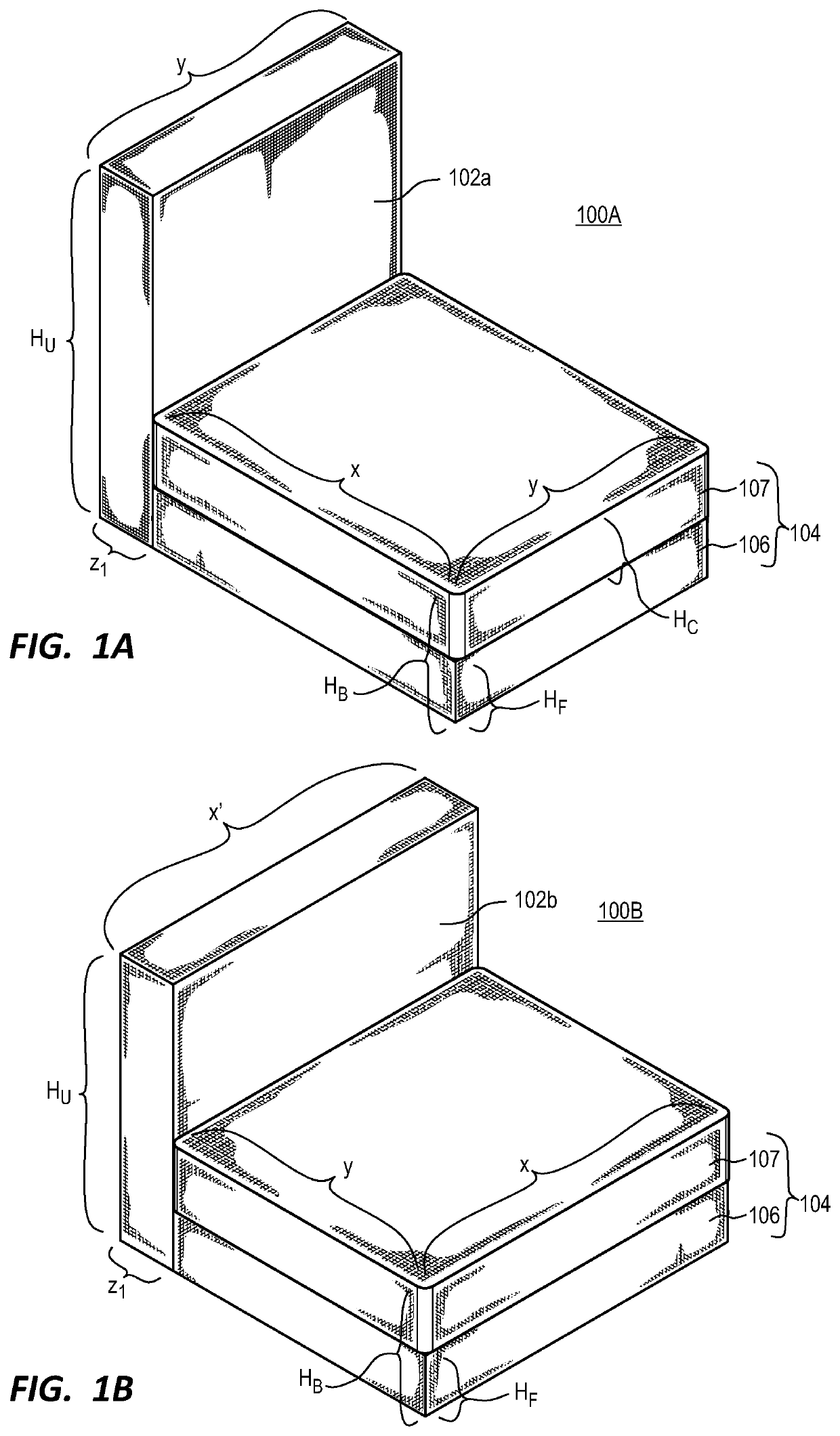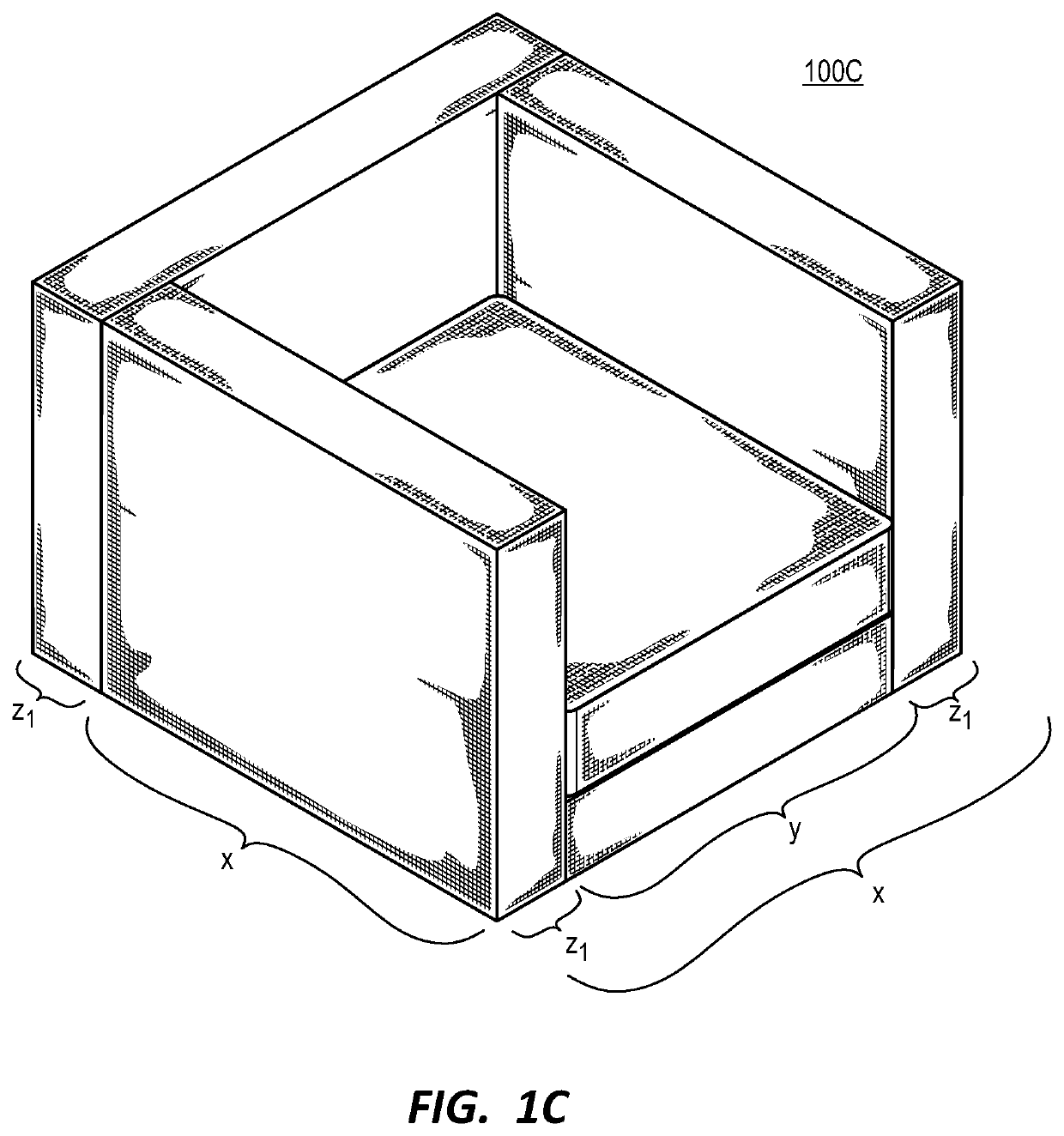Reconfigurable modular furniture assembly with overlapping geometry
a modular furniture and geometry technology, applied in the direction of convertible chairs, convertible stools, chairs, etc., can solve the problems of small and lighter overall packaging for shipping, and achieve the effect of reducing labor intensity, reducing labor intensity, and reducing labor intensity
- Summary
- Abstract
- Description
- Claims
- Application Information
AI Technical Summary
Benefits of technology
Problems solved by technology
Method used
Image
Examples
embodiment 1
[0154] A modular furniture assembly including a base having a first dimension (X) and a second dimension (Y), and an upright member having a third dimension (Z), wherein the base and the upright member have a defined spatial relationship, the defined spatial relationship being: the first dimension (X) of the base is substantially equal to a sum of the second dimension (Y) of the base and two times the third dimension (Z) of the upright member, such that different furniture configurations can be formed.
[0155]Embodiment 2. The modular furniture assembly of embodiment 1, wherein the third dimension (Z) is selected from a width of the upright member (Z1) or a separation distance between two or more receiving holes (Z2) formed in the upright member.
[0156]Embodiment 3. The modular furniture assembly of any of the embodiments 1-2, wherein the two or more receiving holes of the base are separated from one another by the separation distance (Z2) that is equal to the third dimension (Z) of th...
embodiment 6
[0159] The modular furniture assembly of any of the embodiments 1-5, wherein a height (HU) of the upright member is substantially greater than a height (H) of the base.
embodiment 7
[0160] The modular furniture assembly of any of the embodiments 1-6, wherein a height (HU) of the upright member is perpendicular to a length of the upright member.
[0161]Embodiment 8. The modular furniture assembly of any of the embodiments 1-7, wherein a length of the upright member is a length in a horizontal plane and the first dimension (X) of the base is a length in said horizontal plane, and wherein the second dimension (Y) of the base is in said horizontal plane and the third dimension (Z) of the upright member is in said horizontal plane.
[0162]Embodiment 9. The modular furniture assembly of any of the embodiments 1-8, further including at least one first coupling unit associated with at least one of the base and the upright member; at least one second coupling unit associated with a connector leg assembly, the at least one first coupling unit corresponding with and the at least one second coupling unit.
[0163]Embodiment 10. The modular furniture assembly of any of the embodim...
PUM
 Login to View More
Login to View More Abstract
Description
Claims
Application Information
 Login to View More
Login to View More - R&D
- Intellectual Property
- Life Sciences
- Materials
- Tech Scout
- Unparalleled Data Quality
- Higher Quality Content
- 60% Fewer Hallucinations
Browse by: Latest US Patents, China's latest patents, Technical Efficacy Thesaurus, Application Domain, Technology Topic, Popular Technical Reports.
© 2025 PatSnap. All rights reserved.Legal|Privacy policy|Modern Slavery Act Transparency Statement|Sitemap|About US| Contact US: help@patsnap.com



